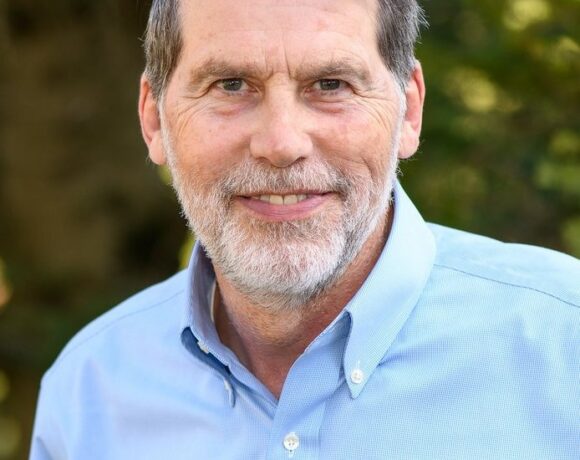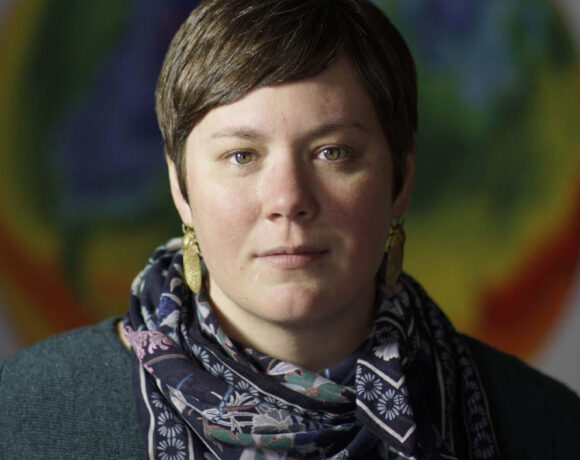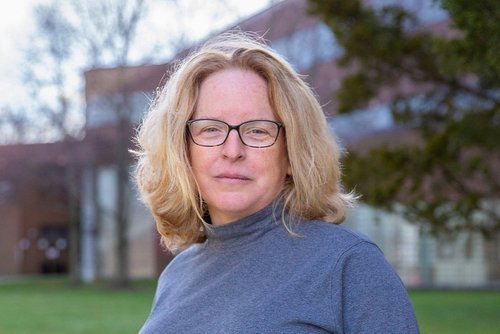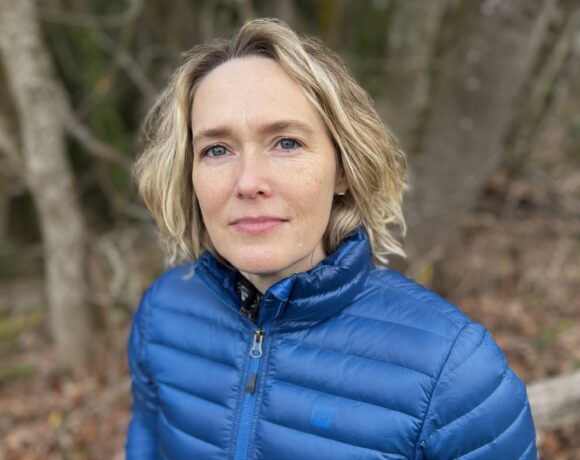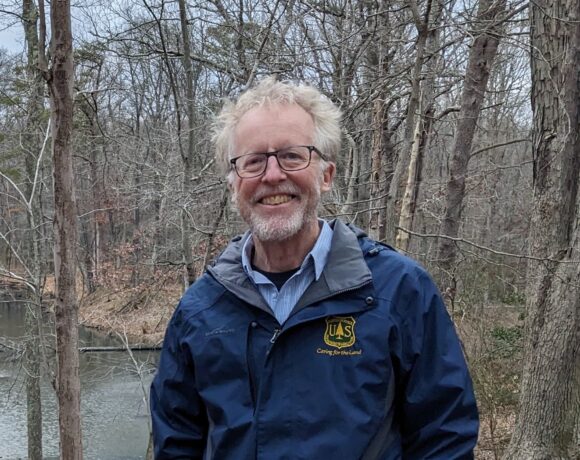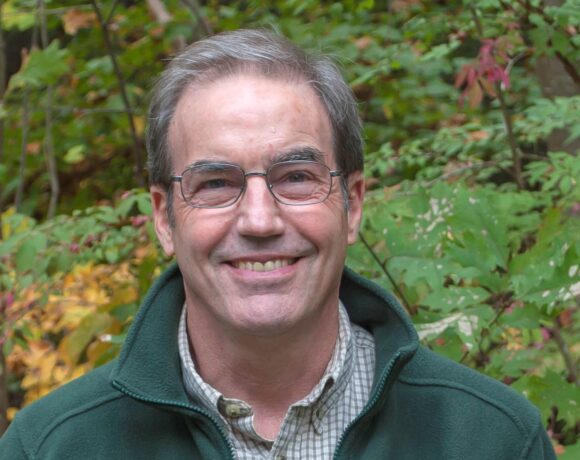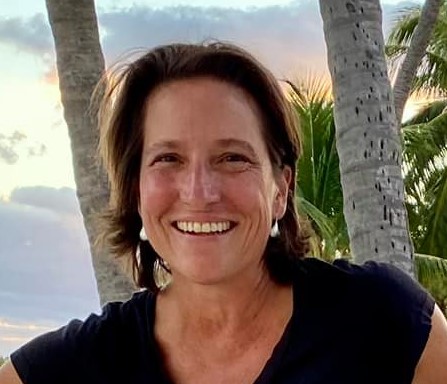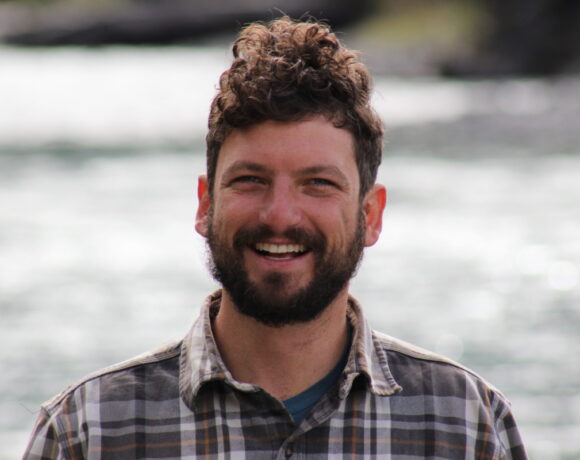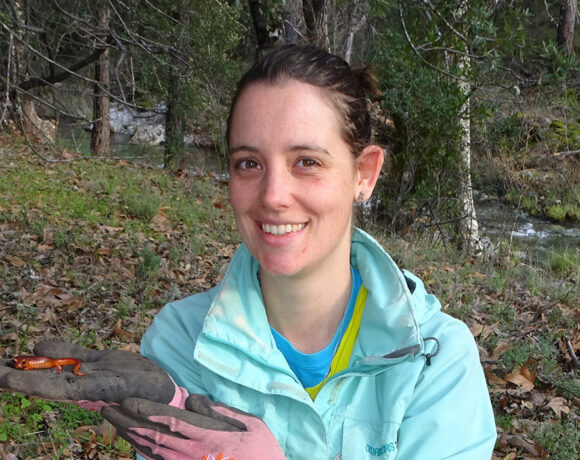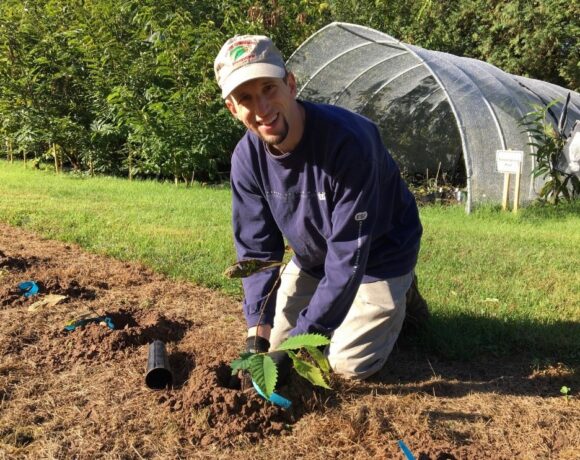Dr. Annise Dobson’s invasion research is motivated by forest conservation for all, particularly in urban and managed forests, with the hope to provide managers advice on how to achieve their goals in conservation, water quality, and carbon sequestration. NYISRI is pleased to feature her in this month’s researcher spotlight:
What kinds of research questions related to invasive species are you currently asking?
I am interested in how invasive species impact food webs and ecosystem function. Recently, I have focused on understanding the spread, impacts, and solutions to jumping worm invasions. Together with collaborators, I am testing multiple hypotheses to understand how these worms invade, including human activities (e.g. landscaping), environmental suitability (e.g. soil moisture) and connectivity (e.g. watersheds). I am interested in the impacts of jumping worms on plant communities, water quality, ecosystem function. Through my experiments I test whether those impacts change with co-occurring stressors such as invasive plants, climate change, pollution, land use change, and deer browse. I am interested in identifying which traits determine a plant’s susceptibility to jumping worms and whether plants growing alongside jumping worms for decades demonstrate any novel adaptations.
What are the basic methods you are using to answer your research questions?
 My research approach includes a combination of observational, experimental, and community science methods. To understand the spread of jumping worms my colleagues and I are assessing jumping worm subpopulation structure with DNA microsatellites and how that relates to ecological, environmental, and human influences on the landscape. We are looking at a wide variety of impacts jumping worms have in the ecosystem which means we have the opportunity to try out lots of different methods! I often use sentinel plantings of native plant species to gauge the impact of jumping worms in combination with other co-occurring stressors. This allows me to transplant seedlings into different experimental scenarios and follow their survival, growth, and reproduction. To look at adaptation and resiliency in plant communities I use reciprocal transplant experiments. This is possible in NYC where different parks and natural areas experiencing different conditions within a small geographic area, providing me a natural experiment with locally-adapted genotypes.
My research approach includes a combination of observational, experimental, and community science methods. To understand the spread of jumping worms my colleagues and I are assessing jumping worm subpopulation structure with DNA microsatellites and how that relates to ecological, environmental, and human influences on the landscape. We are looking at a wide variety of impacts jumping worms have in the ecosystem which means we have the opportunity to try out lots of different methods! I often use sentinel plantings of native plant species to gauge the impact of jumping worms in combination with other co-occurring stressors. This allows me to transplant seedlings into different experimental scenarios and follow their survival, growth, and reproduction. To look at adaptation and resiliency in plant communities I use reciprocal transplant experiments. This is possible in NYC where different parks and natural areas experiencing different conditions within a small geographic area, providing me a natural experiment with locally-adapted genotypes.
Do you have a personal story or path that led to your interest in this research?
Growing up on a farm I always took for granted the service earthworms provide. It was intriguing to me to learn that most earthworms in Northeastern North America were not native and the same thing that made them so beneficial in agricultural fields made them so destructive in forests.
How does your research relate to a wider field of invasive species prevention/management?
By studying the individual and combined effects of multiple invasion hypotheses and multiple stressors, I hope to provide managers with advice on how to achieve their goals such as conservation, water quality, and carbon sequestration. For example, although there are currently no management strategies for jumping worms, managers could instead focus on limiting deer browse pressure, managing invasive plants, and actively restoring deep-rooted species to achieve the same goals.
What’s the most important thing about your research for stakeholders, managers, or policy makers to know?
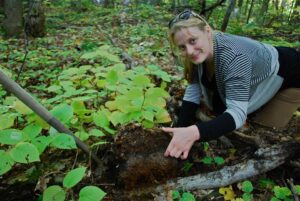 There are currently no good management options for jumping worms in natural habitats. However, unlike most invasive species that spread great distances on their own once introduced in North America, jumping worm movement seems closely tied to human activities such as transport of mulch and soil. Small changes such as planting bare root, cleaning equipment, and heat-treating mulch and potting soil can make a big difference in limiting their spread. See the Jumping Worm Homeowners Guide on NYISRI’s website for more advice.
There are currently no good management options for jumping worms in natural habitats. However, unlike most invasive species that spread great distances on their own once introduced in North America, jumping worm movement seems closely tied to human activities such as transport of mulch and soil. Small changes such as planting bare root, cleaning equipment, and heat-treating mulch and potting soil can make a big difference in limiting their spread. See the Jumping Worm Homeowners Guide on NYISRI’s website for more advice.
What do you hope the long-term impact of your work will be?
At the heart of my research is a hope for conservation of resilient, accessible, complex, and biodiverse natural areas.
Is there anything else you’d like to add or tell us about your work?
Working with NYISRI has made my research impactful and gratifying. They are a small team with a big skillset that they use to support co-production of research between myself, collaborators, community members, and managers.
Read more researcher spotlights:



